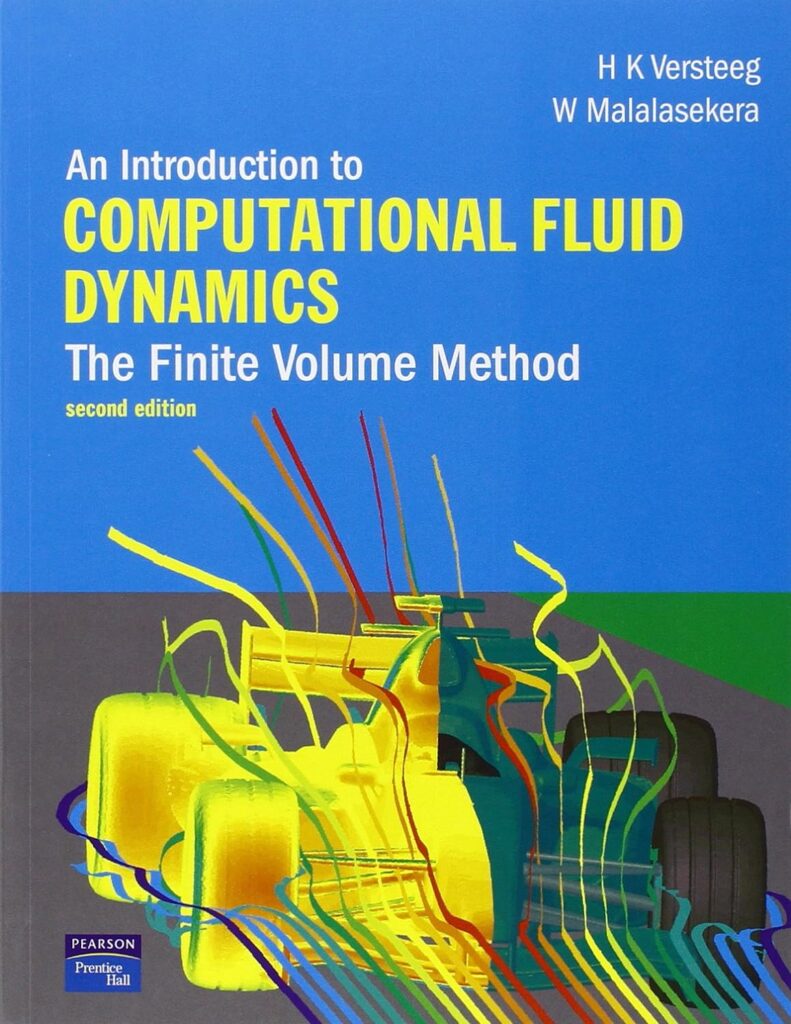This established, leading textbook, is suitable for courses in CFD. The new edition covers new techniques and methods, as well as considerable expansion of the advanced topics and applications (from one to four chapters).
This book presents the fundamentals of computational fluid mechanics for the novice user. It provides a thorough yet user-friendly introduction to the governing equations and boundary conditions of viscous fluid flows, turbulence and its modelling, and the finite volume method of solving flow problems on computers.
The use of Computational Fluid Dynamics to simulate and predict fluid flows, heat transfer and associated phenomena continues to grow throughout many engineering disciplines. On the back of ever more powerful computers and graphical user interfaces CFD provides engineers with a reliable tool to assist in the design of industrial equipment often reducing or eliminating the need for performing trial-and-error experimentation.
An Introduction to Computational Fluid Dynamics is the ideal text for the newcomer to the area whether they be undergraduates, graduates, or professionals. It provides thorough yet accessible coverage of commercial finite volume based CFD codes within the context of the underlying theory, giving the reader a full appreciation of CFD and its numerous engineering applications.
Key features
- Offers essential support for novice users of commercial CFD codes such as ANSYS CFX, FLUENT, STAR-CD and PHOENICS.
- Covers fluids and turbulence physics together with computational modelling techniques
- Uses a step-by-step approach to introduce the methodology
- Chapter summaries and worked examples throughout to reinforce understanding of the key concepts
New to this edition
- A new chapter describing unstructured meshing techniques
- A new chapter on CFD uncertainty
- New coverage of the fundamentals of Large-Eddy Simulation (LES) and Direct Numerical Simulation (DNS) techniques
- Summaries of TVD techniques and multi-grid solution techniques
- Added examples of the SIMPLE algorithm for pressure-velocity coupling
- Two new chapters with advanced material covering combustion and radiative heat transfer modelling
H K Versteeg and W Malalasekera are both senior lecturers in Thermo-Fluids, at Loughborough University.
Chapter Outline: “An Introduction to Computational Fluid Dynamics: The Finite Volume Method”
- Introduction to Computational Fluid Dynamics (CFD)
- Overview of CFD and its applications
- Importance of numerical methods in fluid dynamics
- Governing Equations
- Continuity, momentum, and energy equations
- Derivation of governing equations for fluid flow
- Finite Volume Method Basics
- Introduction to finite volume method
- Discretization of governing equations
- Numerical Solution Techniques
- Overview of numerical techniques in CFD
- Stability, convergence, and accuracy considerations
- Grid Generation
- Structured and unstructured grid generation techniques
- Grid quality and its impact on simulations
- Boundary Conditions
- Different types of boundary conditions
- Implementation of boundary conditions in CFD simulations
- Solution of Discretized Equations
- Overview of solution methods (e.g., iterative solvers)
- Matrix solution techniques
- Turbulence Modeling
- Introduction to turbulence
- Overview of common turbulence models
- Heat Transfer
- Modeling heat transfer in CFD simulations
- Applications to conduction, convection, and radiation
- Multiphase Flow
- Modeling of multiple phases (e.g., gas-liquid, solid-liquid)
- Applications and challenges in multiphase flow simulations
- Advanced Topics
- High-performance computing in CFD
- Coupled fluid-structure interaction simulations
- Applications and Case Studies
- Real-world applications of CFD
- Case studies demonstrating the use of the finite volume method
- Future Trends and Developments in CFD
- Emerging technologies and methodologies in CFD
- Challenges and opportunities in the field
Product details
- Publisher : Pearson; 2 edition (Feb. 6 2007)
- Language : English
- Paperback : 520 pages
- ISBN-10 : 0131274988
- ISBN-13 : 978-0131274983
- Item weight : 990 g
- Dimensions : 19.05 x 3.05 x 24.38 cm

